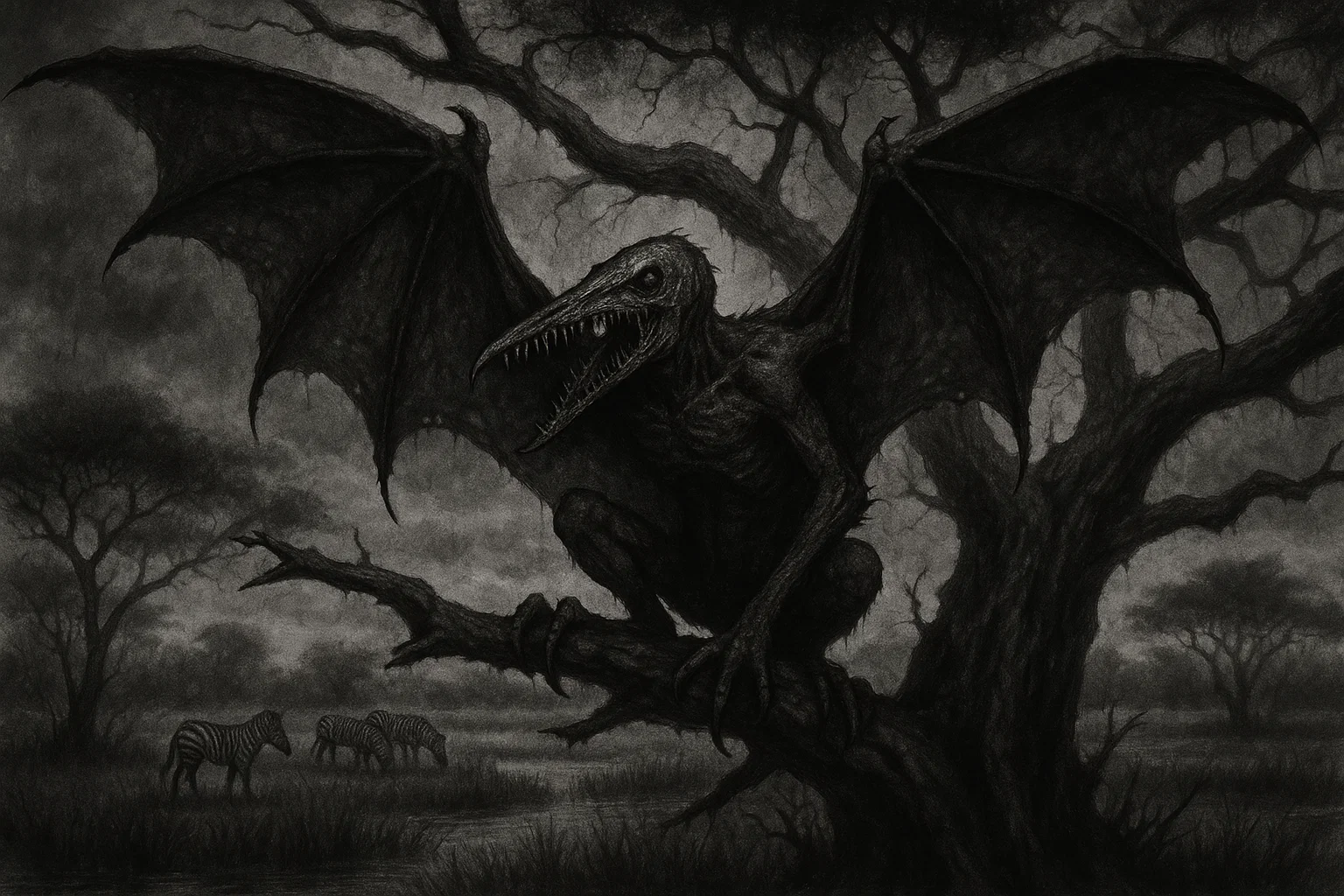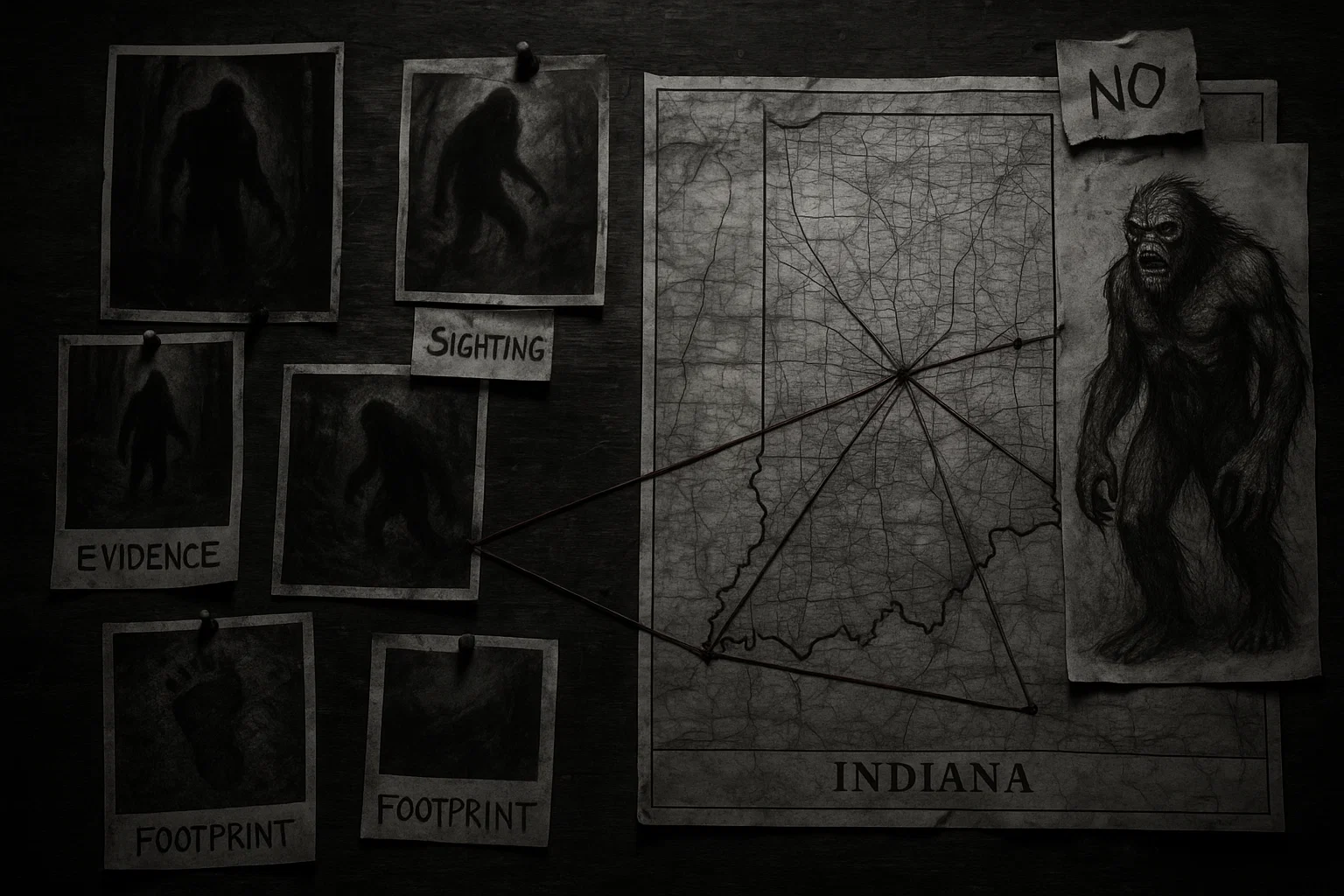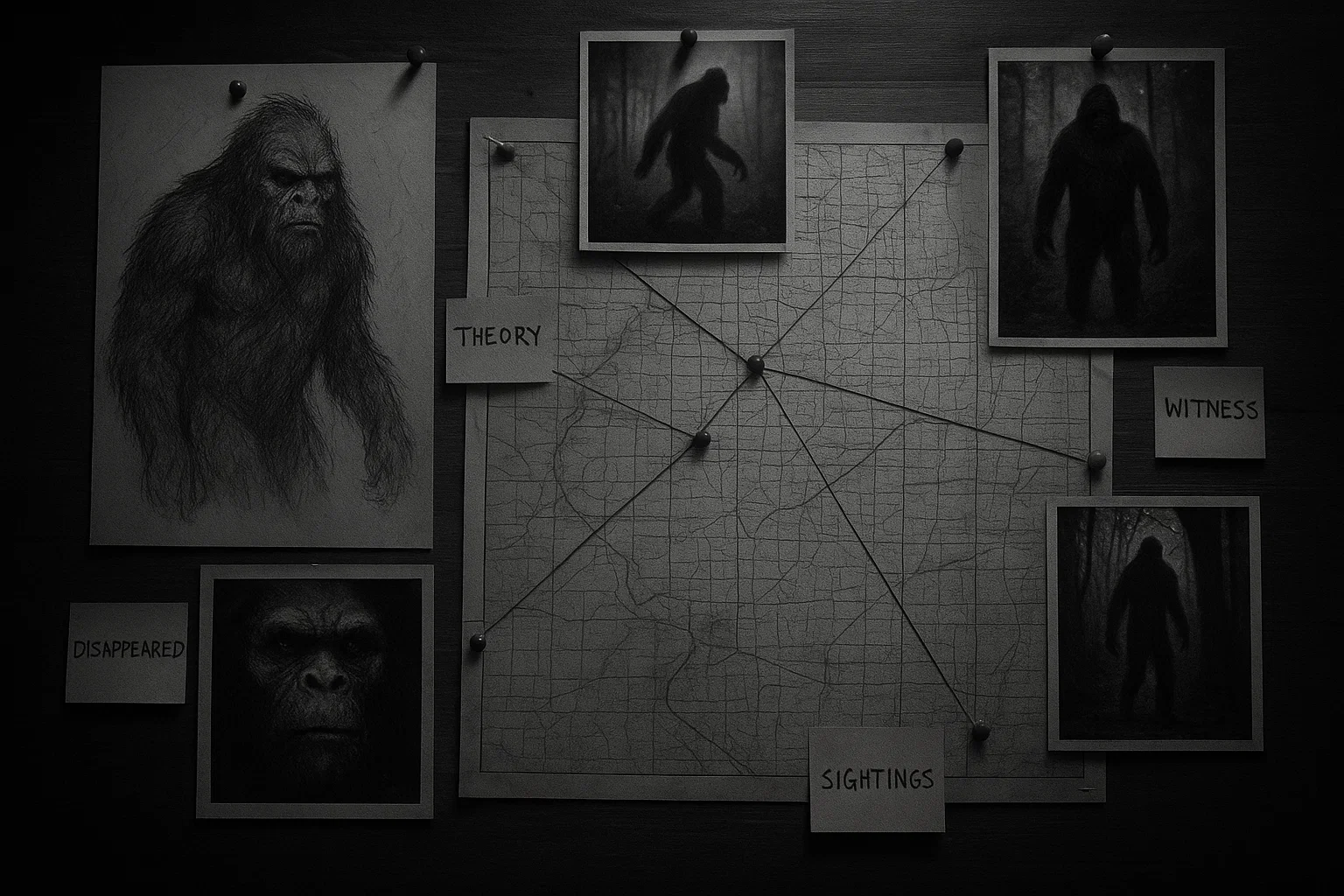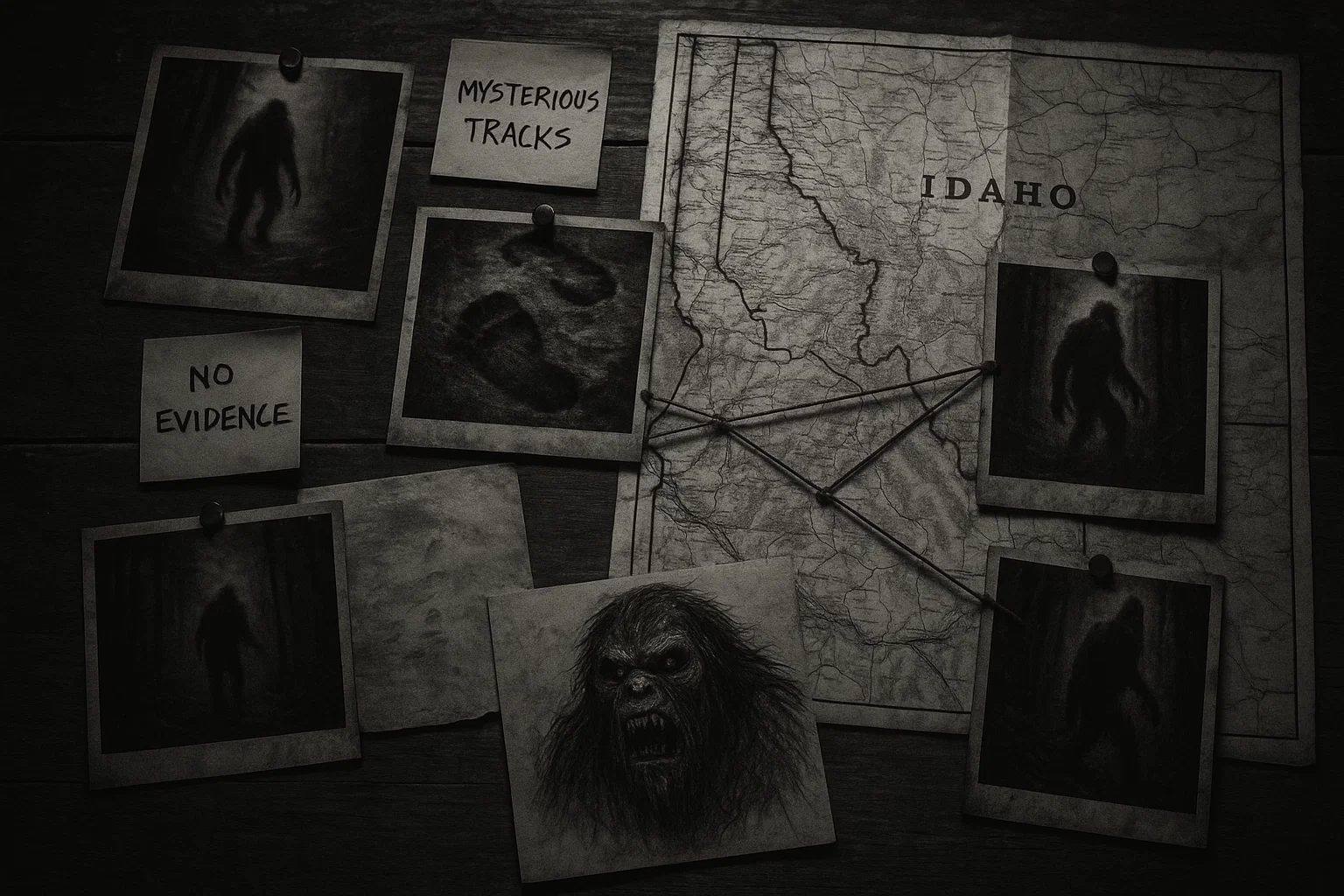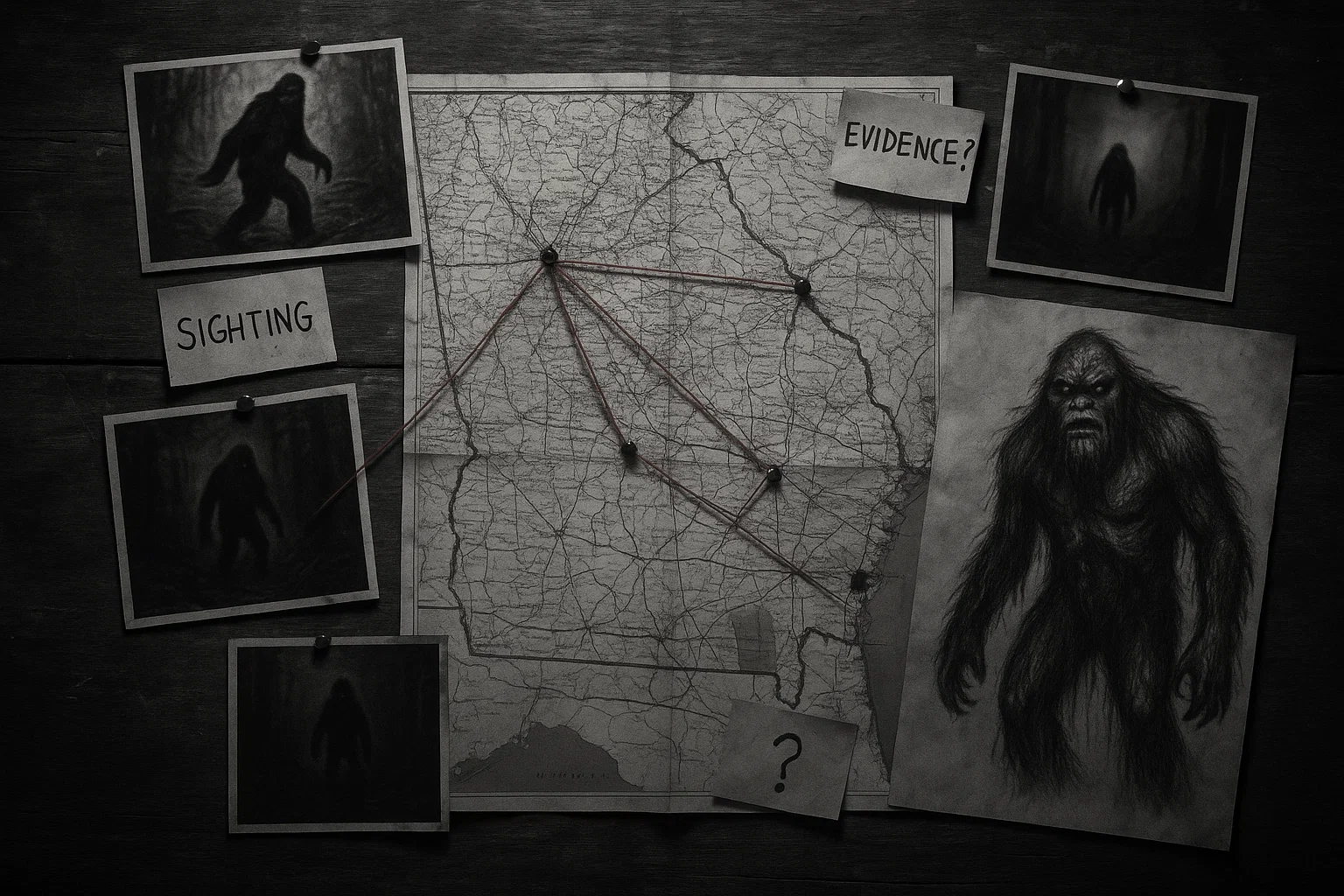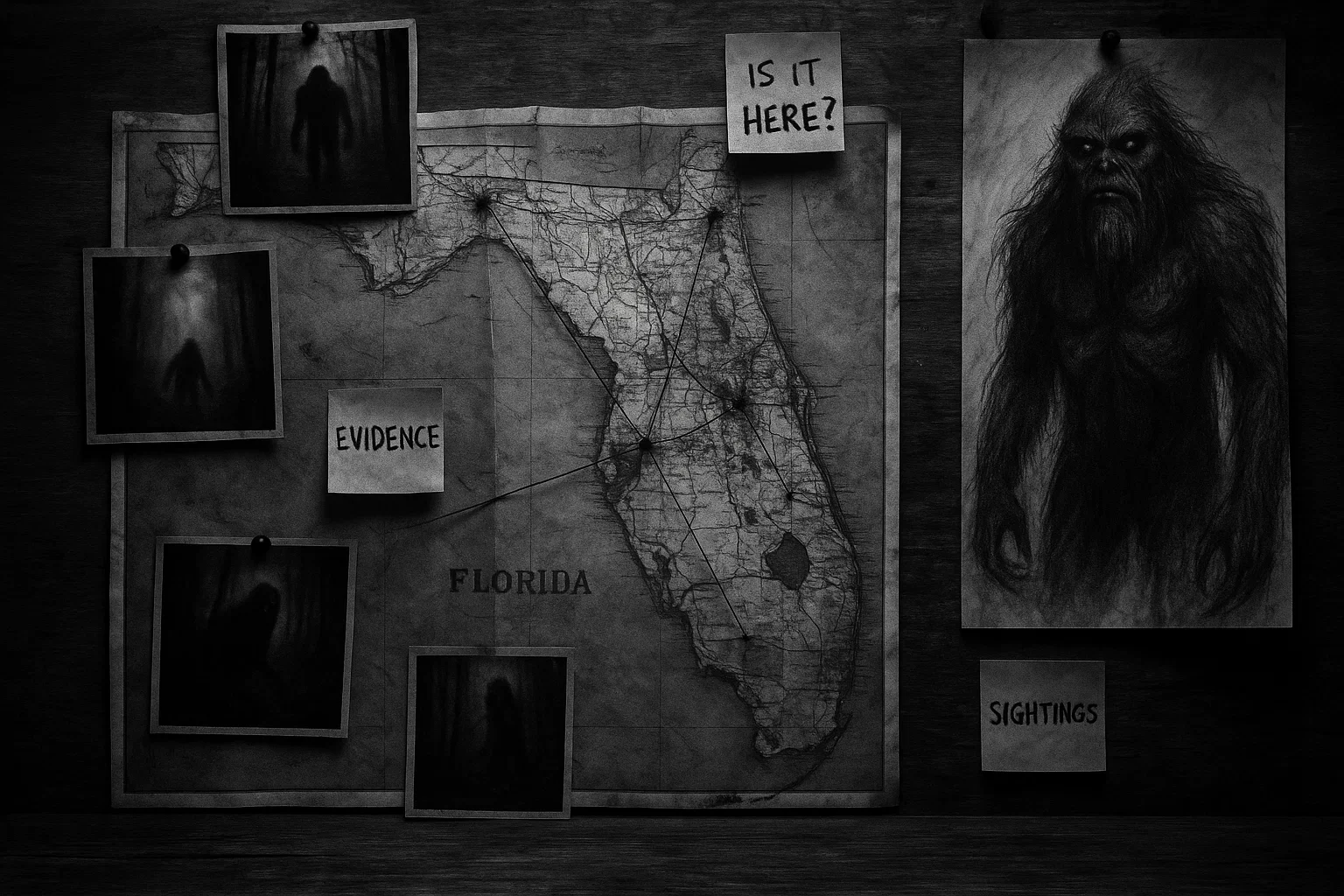Deep in the heart of Africa’s untamed wilderness, where dense jungles meet murky swamps, whispers of a fearsome creature echo through local folklore.
The Kongamato, a legendary winged beast, is said to haunt the skies of Zambia, the Democratic Republic of the Congo, and Angola. Often likened to a prehistoric pterosaur, this cryptid has captivated the imaginations of locals, explorers, and cryptozoologists alike.
With its razor-sharp teeth, bat-like wings, and a reputation for overturning boats, the Kongamato is a symbol of mystery and danger. What is this elusive creature? Could it be a surviving relic of the dinosaur age, a misidentified animal, or a product of cultural legend?
Table of Contents
What Is Kongamato?
The Kongamato is a cryptid, a creature whose existence remains unverified by mainstream science, deeply rooted in the oral traditions of central and southern Africa.
Its name, derived from the Kaonde language spoken in Zambia, translates to “breaker of boats” or “overwhelmer of canoes,” reflecting its alleged aggressive behavior toward fishermen and travelers near rivers and swamps.
Described as a large, reptilian creature with bat-like wings, the Kongamato is often compared to extinct pterosaurs like Pteranodon or Quetzalcoatlus.
Local lore portrays it as a nocturnal predator, feared for attacking humans, capsizing boats, and, in some chilling accounts, digging up graves to feed on corpses. The creature is not merely a physical entity but a cultural symbol, often associated with death, misfortune, and the untamed forces of nature.
Early European explorers, intrigued by these stories, documented them in the 20th century, sparking global interest in this African mystery.
Unlike other cryptids, the Kongamato’s consistent descriptions across different tribes and regions suggest a shared belief in its existence, though its true nature remains elusive.
What Does Kongamato Look Like?
Witnesses describe the Kongamato as a formidable creature with a striking, prehistoric appearance. Its wingspan is reported to range from 4 to 7 feet, though some exaggerated accounts claim up to 100 feet, likely due to fear or storytelling embellishments.
The creature’s body is typically reddish-brown or black, covered in smooth, leathery skin rather than feathers. Its wings are membranous, resembling those of a bat, and its head features a long, pointed beak filled with sharp, jagged teeth—a trait that sets it apart from modern birds, which lack teeth.
Some accounts mention a long, whip-like tail, while others describe glowing red eyes that pierce the darkness, adding to its menacing aura.
Locals, when shown illustrations of pterosaurs, have often identified them as the Kongamato, noting similarities in the creature’s elongated snout and wing structure.
Its size and appearance vary slightly across reports, with some describing it as eagle-sized and others as much larger, but the consistent reptilian and winged features make it a unique figure in cryptozoology.
You May Also Like: Is the Black Prince’s Ruby Really Cursed?
Habitat
The Kongamato is said to dwell in the remote, water-rich ecosystems of Zambia, the Democratic Republic of the Congo, and Angola, particularly in swampy, forested regions where human activity is minimal.
Key locations include the Jiwundu Swamp and Mutanda River in Zambia’s Western Province, the Bangweulu Wetlands in northern Zambia, and the Zambezi River Basin spanning multiple countries.
These areas are characterized by dense vegetation, including papyrus reeds and acacia trees, and are home to diverse fauna such as crocodiles, hippos, and large birds like shoebill storks and marabou storks.
The terrain is often muddy and inaccessible, with thick undergrowth and seasonal flooding, making it difficult for researchers to explore. These isolated habitats may explain why the Kongamato remains elusive, as they provide ample cover for a large, flying creature.
The regions associated with the Kongamato have a rich history of unexplained phenomena. The Bangweulu Wetlands, for instance, are steeped in local legends about spirits and mysterious creatures, with some tribes believing the swamps are haunted by ancestral spirits or demonic entities.
The Jiwundu Swamp is similarly linked to tales of supernatural beings, including water spirits that lure travelers to their doom.
While no other specific cryptids are consistently reported in these exact locations, the broader region has stories of creatures like the Emela-ntouka, a horned, semi-aquatic beast, and the Mokele-mbembe, a dinosaur-like creature, suggesting a cultural tradition of attributing strange phenomena to monstrous beings.
Historically, these areas were sparsely populated due to their harsh conditions, but colonial exploration in the 19th and 20th centuries brought tales of the Kongamato to Western attention, often tied to unexplained attacks on boats or disappearances near rivers.
The combination of dense, unexplored terrain and a cultural backdrop of mysticism makes these habitats prime settings for cryptid lore.
Kongamato Sightings
The Kongamato has been reported since at least the early 20th century, with accounts from local tribes, colonial officials, and modern explorers:
| Date | Location | Witness | Description |
|---|---|---|---|
| 1923 | Jiwundu Swamp, Zambia | Frank H. Melland | Documented Kaonde stories of a reddish, winged reptile attacking canoes; locals feared it as a death omen |
| 1925 | Northern Rhodesia (Zambia) | Local fishermen | Reported a large, toothed creature attacking boats in the Zambezi River; no specific witness named |
| 1932 | Assumbo Mountains, Cameroon | Ivan Sanderson | Saw a black, eagle-sized creature (Olitiau) with sharp teeth dive at his team; sketched it as pterosaur-like |
| 1956 | Lake Bangweulu, Zambia | J. P. F. Brown | Observed two reddish-brown creatures with 3.5–4 ft wingspans, toothed muzzles, and long tails flying overhead |
| 1957 | Bangweulu Wetlands, Zambia | Unnamed patient at Fort Rosebery Hospital | Claimed a winged creature with a long beak attacked him while fishing, causing a deep chest wound |
| 1988 | Zambezi River Basin, Namibia | Roy Mackal, James Kosi | Kosi saw a black glider with white markings, 6–8 ft wingspan; Mackal collected consistent local accounts |
| 1994 | Mutanda River, Zambia | Joseph Mkwawa | Fisherman’s canoe capsized by a 5-ft-wingspan creature with glowing eyes and a toothed beak |
| 1990s | Mutanda River, Zambia | Various fishermen | Multiple reports of a winged creature attacking boats at night; described as silent and aggressive |
1923: Frank H. Melland’s Documentation
In 1923, British colonial administrator Frank H. Melland published In Witchbound Africa, a book documenting the folklore of the Kaonde people in Northern Rhodesia (now Zambia).
While stationed near the Jiwundu Swamp, Melland collected stories from locals who described a terrifying creature they called Kongamato. They claimed it was a large, reddish, winged reptile with a toothed beak, known for attacking canoes and causing wounds with its claws.
When shown images of pterosaurs, the Kaonde identified them as the creature, describing its habit of swooping down on fishermen at dusk. Melland noted that the locals feared the Kongamato more than lions or crocodiles, believing it to be a harbinger of death.
His account, based on interviews rather than personal observation, was one of the first to introduce the Kongamato to Western audiences.
You May Also Like: The Portrait of Doña Isabel de Porcel Curse: Real or Not?
1932: Ivan Sanderson’s Olitiau Encounter
In 1932, zoologist and explorer Ivan T. Sanderson led an expedition in the Assumbo Mountains of Cameroon, near the border with Nigeria.
While crossing a river at twilight, Sanderson and his team were startled by a large, black creature with a wingspan of about 12 feet, which dove toward them with a hissing sound. Its sharp, toothed beak and bat-like wings left the team shaken.
That evening, they saw it again, perched on a cliff, and locals identified it as Olitiau, a creature strikingly similar to the Kongamato. Sanderson, a trained naturalist, sketched the creature, noting its resemblance to a pterosaur.
The locals warned that it was dangerous, known to attack people and livestock. This sighting, documented in Sanderson’s later writings, remains one of the most detailed accounts by a Western observer.
1956: J. P. F. Brown’s Lake Bangweulu Sighting
On a clear morning in 1956, engineer J. P. F. Brown was traveling near Lake Bangweulu in Northern Rhodesia when he spotted two large creatures flying overhead.
He described them as having a wingspan of approximately 3.5 to 4 feet, reddish-brown skin, long, narrow tails, and dog-like muzzles with visible teeth. The creatures flew slowly, allowing Brown to observe them for several minutes.
He reported the sighting to local authorities, prompting others in the region to come forward with similar accounts. Brown’s description, published in local newspapers, fueled speculation about a surviving pterosaur and drew attention from cryptozoologists.
The sighting’s specificity, including the time of day and detailed physical description, makes it one of the most credible reports.
1957: Fort Rosebery Hospital Incident
In 1957, a man arrived at a hospital in Fort Rosebery (now Mansa), Zambia, with a severe chest wound. He claimed to have been attacked by a large, winged creature in the Bangweulu Wetlands while fishing at night.
According to hospital staff, the man described the creature as having a long beak, bat-like wings, and a reddish hue. He insisted it was a Kongamato, and locals corroborated his story, claiming such attacks were not uncommon.
The wound, described as a deep gash, was consistent with a claw or beak injury, though medical records did not conclusively link it to an unknown creature. This incident, reported in local oral histories, added to the Kongamato’s fearsome reputation.
1988: Roy Mackal’s Namibia Expedition
In 1988, University of Chicago biologist Roy P. Mackal, known for his cryptozoological research, led an expedition to Namibia to investigate Kongamato sightings.
While exploring the Zambezi River Basin, Mackal interviewed numerous locals who described a large, winged creature that attacked boats and fishermen. One team member, James Kosi, reported seeing a giant black glider with white markings soaring between hilltops at dusk.
The creature’s wingspan was estimated at 6 to 8 feet, and its silent flight was eerie. Although Mackal found no physical evidence, the consistency of the accounts, including detailed descriptions of the creature’s appearance and behavior, convinced him that the Kongamato warranted further study.
His expedition, while inconclusive, highlighted the creature’s enduring presence in local lore.
1990s: Local Fishermen’s Reports
Throughout the 1990s, fishermen along the Mutanda River in Zambia reported multiple encounters with the Kongamato. One notable account came from a fisherman named Joseph Mkwawa, who claimed that in 1994, his canoe was capsized by a large, winged creature while he fished at night.
Mkwawa described it as having a wingspan of about 5 feet, a toothed beak, and glowing eyes. He escaped with minor injuries but lost his canoe. Similar reports from other fishermen in the region described the creature swooping down silently, often targeting lone individuals.
These accounts, shared through oral tradition, reinforced the Kongamato’s reputation as a nocturnal predator.
You May Also Like: The Cursed Phone Numbers | Horror Story
Evidence, Investigations, and Theories
Despite numerous sightings, no definitive physical evidence of the Kongamato exists. No fossils, photographs, videos, or DNA samples have been recovered to confirm its presence.
Investigations have relied heavily on eyewitness accounts and local folklore, with no scientific breakthrough to validate the creature’s existence.
Physical Evidence
Wounds and Injuries: Reports like the 1957 Fort Rosebery Hospital incident describe wounds attributed to the Kongamato, such as deep gashes consistent with claws or a beak. However, these injuries could also be caused by known animals like crocodiles or large birds.
Sketches and Descriptions: Ivan Sanderson’s 1932 sketch of the Olitiau provides a visual record, depicting a creature with bat-like wings and a toothed beak. Local descriptions are consistent, often mentioning a reddish hue and glowing eyes, but no photographs or videos have surfaced.
Lack of Fossils: No pterosaur fossils from the Cenozoic era (post-66 million years ago) have been found, casting doubt on the surviving pterosaur theory. Modern ecosystems also lack the resources to support a large, flying reptile population undetected.
Key Investigations
Frank H. Melland (1923): Melland’s work in In Witchbound Africa was an ethnographic study, not a scientific investigation, but it provided a foundation for later research by documenting Kaonde folklore.
Ivan Sanderson (1932): As a trained zoologist, Sanderson’s encounter in Cameroon offered a credible eyewitness account, though his sketch remains the only tangible record.
Roy Mackal (1988): Mackal’s expedition to Namibia focused on collecting oral histories. While he found no physical evidence, the consistency of local accounts suggested a shared cultural belief in the creature.
Modern Expeditions: Television programs like Destination Truth have explored Kongamato sightings in Zambia, interviewing locals and searching swamps, but no conclusive evidence has been found.
You May Also Like: The Adjule: Is the Sahara Hiding a Secret Predator?
Theories
Surviving Pterosaur Theory
- Possibility: Proponents argue that the Kongamato’s pterosaur-like features—membranous wings, toothed beak, and long tail—suggest it could be a surviving species like Pteranodon (wingspan up to 27 feet) or Quetzalcoatlus (up to 60 feet). Locals’ recognition of pterosaur images supports this idea.
- Challenges: Pterosaurs are believed to have gone extinct 66 million years ago, and no fossils from recent eras exist. A large, flying reptile would require significant food resources and would likely have been detected by now. The exaggerated 100-foot wingspan in some accounts further undermines credibility.
- Fit with Evidence: The theory aligns with physical descriptions but lacks physical evidence and ecological plausibility.
Misidentification of Known Animals
- Possibility: The Kongamato could be a misidentified large bird, such as the shoebill stork (Balaeniceps rex), which has a wingspan of up to 8 feet and a large, pointed beak. The hammerhead bat (Hypsignathus monstrosus), with its unusual face and 3-foot wingspan, is another candidate. Sightings often occur in bird-rich wetlands, and fear or poor lighting could exaggerate features like beaks into “teeth.”
- Challenges: No known bird or bat matches the full description, including the reported teeth and aggressive behavior. Shoebill storks are non-aggressive, and hammerhead bats are nocturnal fruit-eaters, unlikely to attack boats.
- Fit with Evidence: This is the most likely theory, as it explains sightings without requiring an unknown species. Misidentification is common in cryptozoology, especially in low-visibility conditions.
Cultural and Folklore Influence
- Possibility: The Kongamato may be a cultural construct, embodying fears of dangerous waterways or serving as a warning against venturing into remote swamps. Its association with death and grave-digging could reflect taboos or spiritual beliefs about the afterlife. Similar creatures in African folklore, like the Emela-ntouka, suggest a tradition of attributing unexplained events to monstrous beings.
- Challenges: Consistent physical descriptions across regions and time periods suggest more than pure myth. Eyewitness accounts from non-locals, like Sanderson and Brown, add complexity to this theory.
- Fit with Evidence: This theory explains the lack of physical evidence and the creature’s cultural significance but struggles to account for detailed, consistent sightings.
Hoax or Exaggeration
- Possibility: Some sightings may be hoaxes or exaggerated stories, possibly spread to attract attention or reinforce local fears. The lack of photographic evidence despite decades of reports supports this idea.
- Challenges: The consistency of accounts across different cultures and eras, including from credible witnesses like Sanderson, makes a widespread hoax unlikely.
- Fit with Evidence: While possible for some reports, this theory does not fully explain the breadth and consistency of sightings.
Most Likely Theory: The misidentification theory is the most plausible, given the absence of physical evidence and the presence of large birds and bats in the Kongamato’s reported habitats. Shoebill storks or hammerhead bats, seen in dim light or during moments of fear, could be mistaken for a reptilian creature. Cultural amplification may then transform these encounters into a cohesive legend, blending real animals with folklore.
You May Also Like: Is Mamlambo Real? Mythical Snake, Mermaid, or Real-Life Monster?
Comparison with Other Similar Cryptids
The Kongamato shares traits with other flying cryptids worldwide, particularly those with large wingspans and unusual appearances:
| Cryptid | Location | Description | Differences |
|---|---|---|---|
| Ropen | Papua New Guinea | Large, winged creature with a long tail; bioluminescent glow | Glows at night, unlike Kongamato |
| Thunderbird | North America | Giant bird, wingspan up to 20 feet | Feathered, not reptilian |
| Mothman | West Virginia, USA | Moth-like humanoid with red eyes | Humanoid shape, not reptilian |
| Jersey Devil | New Jersey, USA | Winged, horse-headed creature | Distinct kangaroo-like body |
| Ahool | Indonesia | Bat-like creature, 6–10 ft wingspan | Distinct vocalizations |
| Batsquatch | California, USA | Bat-like creature, 10–15 ft wingspan | More bat-like than reptilian |
| Van Meter Visitor | Iowa, USA | Small, winged creature with glowing eyes | Smaller, nocturnal |
| Flatwoods Monster | West Virginia, USA | Winged, metallic creature | Linked to UFOs, metallic appearance |
| Piasa Bird | Illinois, USA | Winged, dragon-like creature | Painted on cliffs, more symbolic |
| Snallygaster | Maryland, USA | Winged reptile with tentacles | Tentacles, more dragon-like |
Is Kongamato Real?
The question of the Kongamato’s existence remains a tantalizing mystery. Eyewitness accounts, spanning decades and regions, paint a vivid picture of a pterosaur-like creature terrorizing African waterways.
Yet, the absence of concrete evidence—fossils, photographs, or remains—casts significant doubt on its reality. Mainstream science dismisses the surviving pterosaur theory, citing the lack of recent fossils and the ecological improbability of a large, flying reptile surviving undetected.
The misidentification theory, supported by the presence of large birds and bats in the Kongamato’s habitats, offers a grounded explanation, though it doesn’t fully capture the cultural weight of the creature’s legend.
The Kongamato may represent a blend of reality and folklore, where sightings of shoebill storks or hammerhead bats, amplified by fear and oral tradition, have evolved into a cohesive cryptid narrative.
Its role as a symbol of danger and the unknown in African culture underscores its significance, regardless of its physical existence.
For now, the Kongamato remains a captivating enigma, a testament to humanity’s fascination with the mysteries lurking in the world’s wild places.

